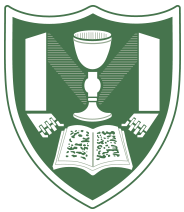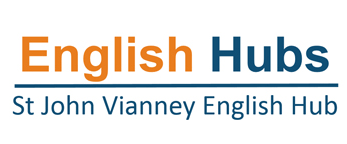
Design & Technology
At St John Vianney Primary School, we recognise the great impact that creators and designers have upon our lives. We think it is extremely important that our children understand the process of designing and creating as well as having the skills to be able to design, create and evaluate themselves. Our children receive skills training and go through the design process with a view to making their own, unique, finished products. Design and Technology should be enjoyable for all and here, at St John Vianney Primary School, each child’s creativity is nurtured and encouraged.
We teach Design and Technology by following the ‘design, make, evaluate and technical knowledge’ approach. We use the ‘Projects on a Page’ which are from the ‘Design and Technology Association’. They provide excellent guidance covering all the National Curriculum objectives for Design and Technology and through our curriculum, we ensure that children learn, practice and develop all of the key skills needed such as sewing, cooking and linking. The skills are progressive and the ‘Projects’ develop the practical application of key skills whilst linking to a topic or context of choice, therefore, the ‘Projects’ are delivered in a real, meaningful context. Technology is advancing all the time and whilst we cannot foretell what technological developments are to come in the future, we can provide the children with the skills and attributes they will need to be confident in this area.
Intent
At St John Vianney Primary School it is our intention to:
Develop and apply, the creative, technical and practical skills needed to perform everyday tasks with confidence within our increasingly technological world.
Understand and apply the principles of nutrition and healthy eating when learning how to prepare and cook a range of foods.
At St John Vianney Primary School we encourage children to use their creativity and imagination to design and make products that solve real and relevant problems within a variety of contexts considering their own and others’ needs, want and values. We aim to, wherever possible, link work to our school context and location and other disciplines such as Mathematics and Science. When making products and preparing food, pupils will be encouraged to consider uses and users asking perceptive questions to enable them to evaluate designs and products at every stage of the process.
Children use the talents they have been given to achieve the best they can through designing, making and evaluating a range of products and developing important skills.
The key skills taught in the Design and Technology curriculum at St John Vianney Primary School are:
Plan.
- Use technical knowledge to make informed choices.
- Design purposeful and appealing products.
- Use tools to perform practical tasks.
- Understand the principles of a healthy diet when preparing food.
- Evaluate and suggest improvements to their own and others’ work.
Implementation
Through a variety of creative and practical activities, we teach the knowledge, understanding and skills needed to engage in an interactive process of designing and making. The children work in a range of relevant contexts (for example home, school, leisure and the wider environment).
When designing and making, the children are taught to:
Design
• Use research and develop design criteria to inform the design of innovative, functional, appealing products that are fit for purpose, aimed at particular individuals or groups.
• Generate, develop, model and communicate their ideas through discussion, annotated sketches, diagrams and prototypes.
Make
• Select from and use a wider range of tools and equipment to perform practical tasks (for example, cutting, shaping, joining and finishing).
• Select from and use a wider range of materials and components, including construction materials, textiles and ingredients, according to their functional properties and aesthetic qualities.
Evaluate
• Investigate and analyse a range of existing products.
• Evaluate their ideas and products against their own design criteria and consider the views of others to improve their work.
• Technical knowledge.
• Apply their understanding of how to strengthen, stiffen and reinforce more complex structures.
• Understand and use mechanical systems in their products.
• Understand and use electrical systems in their products.
Key skills for DT have been mapped across the school to ensure progression between year groups. This also ensures that there is a context for the children’s work in Design and Technology; that they learn about real life structures and the purpose of specific examples, as well as developing their skills throughout the programme of study.
Assessment
Pupils evaluate their own designs and models. Children are assessed throughout their work in each topic. Any misconceptions can then be addressed in class. End of unit assessments are used to identify any wider misconceptions so that skills can be revisited.
Impact
We ensure the children:
• Develop the creative, technical and practical expertise needed to perform everyday tasks confidently and to participate successfully in an increasingly technological world.
• Build and apply a repertoire of knowledge, understanding and skills in order to design and make high-quality prototypes and products for a wide range of users and critique, evaluate and test their ideas and products and the work of others.
• Understand and apply the principles of nutrition and learn a variety of techniques and skills to be used in the kitchen (chopping and baking etc). Children will design and make a range of products. Activities are made appropriate to the age and ability of the child.
Children learn how to take risks, becoming resourceful, innovative, enterprising and capable citizens. Through the evaluation of past and present design and technology, they develop a critical understanding of its impact on daily life and the wider world.
Design and Technology Year Group Overviews
At St John Vianney we have Design & Technology overviews which map out National Curriculum coverage, Maths and English links and topic related vocabualry.
Year 1 D&T Overviews
Year 2 D&T Overviews
Year 3 D&T Overviews
Year 4 D&T Overviews
Year 5 D&T Overviews
Year 6 D&T Overviews
#SJV4T made pasta salads to conclude their #SJVDT topic of food and healthy,varied diets! ???????????????? pic.twitter.com/JkKga950G6
— St John Vianney (@sjvblackpool) April 28, 2023



